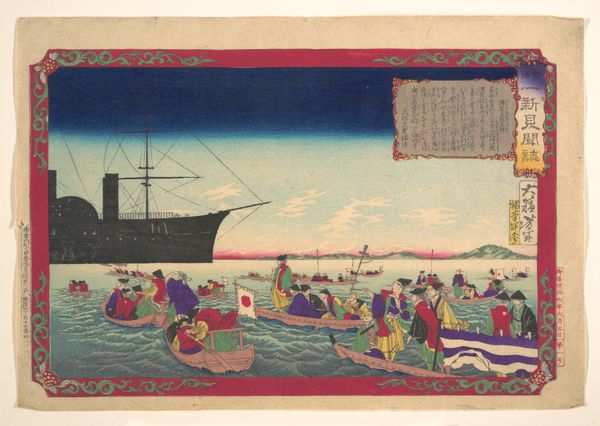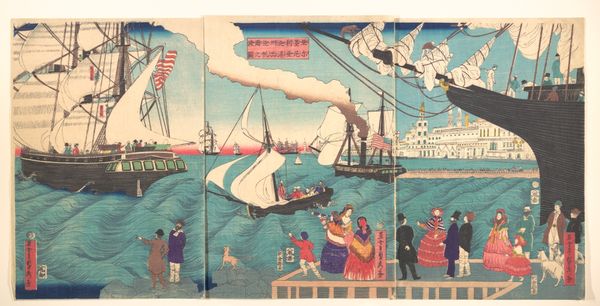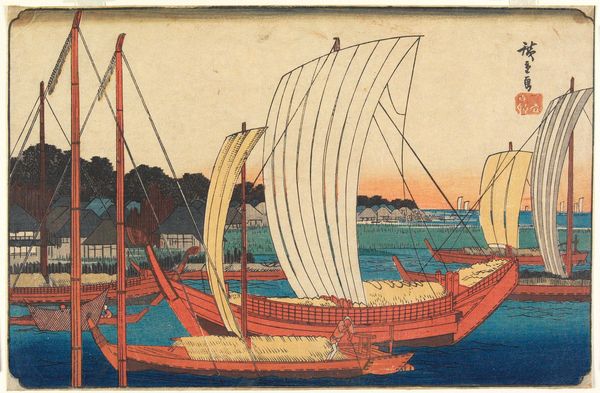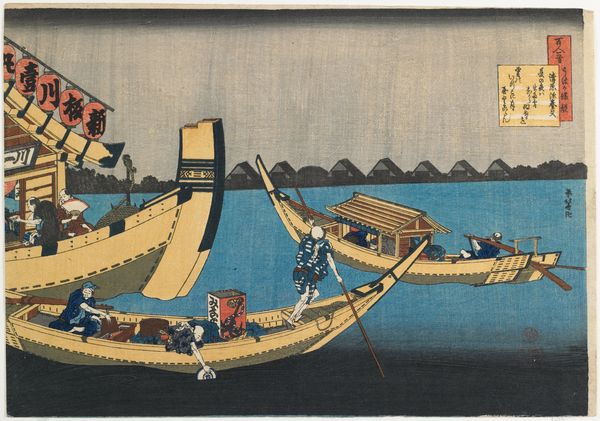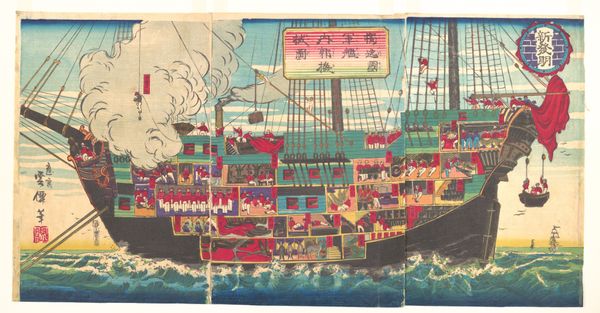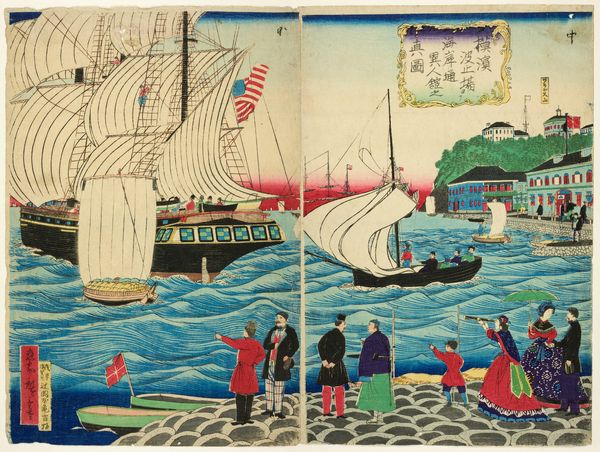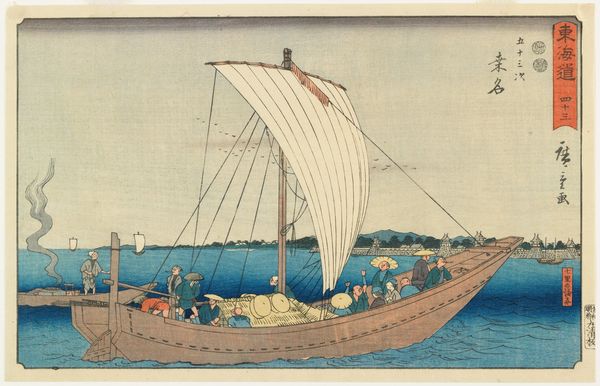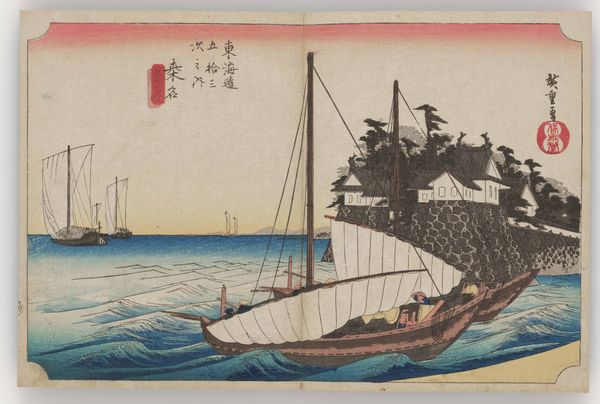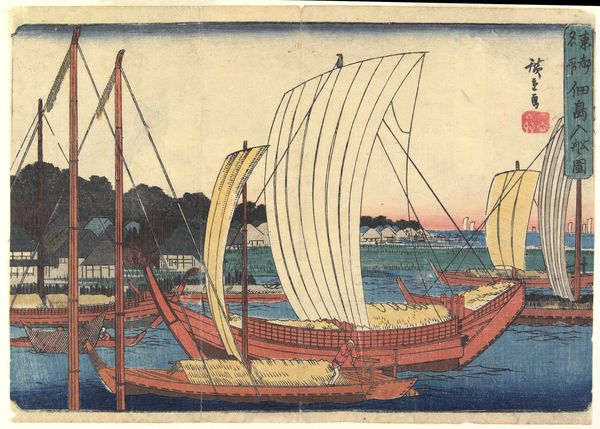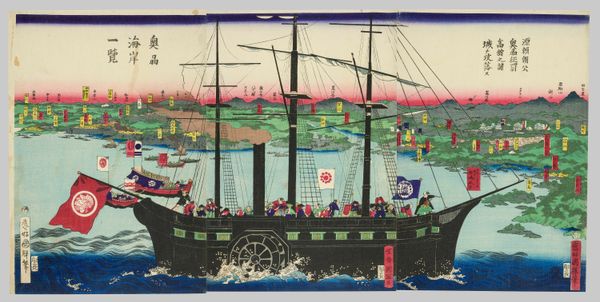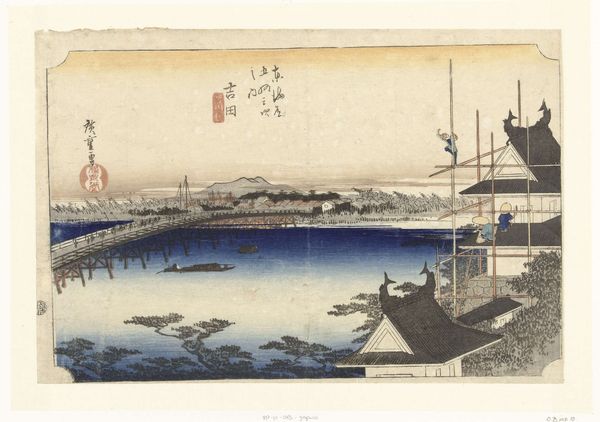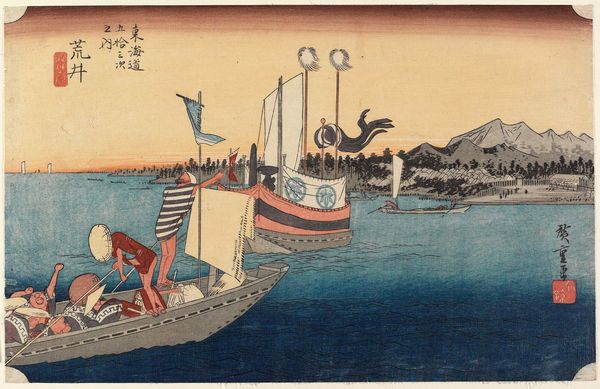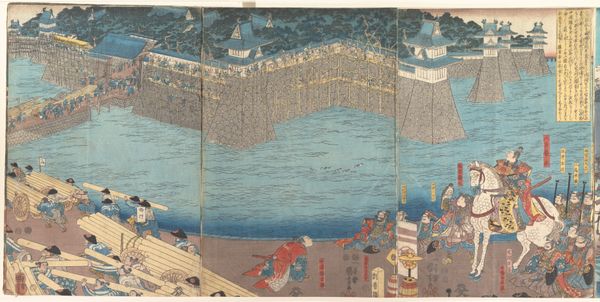
print, woodblock-print
# print
#
asian-art
#
landscape
#
ukiyo-e
#
woodblock-print
#
cityscape
Dimensions: Image (a): 14 1/4 x 9 5/8 in. (36.2 x 24.4 cm) Image (b): 14 1/4 x 9 7/8 in. (36.2 x 25.1 cm) Image (c): 14 1/4 x 9 5/8 in. (36.2 x 24.4 cm)
Copyright: Public Domain
Curator: This woodblock print, “Curio Shop in Yokohama,” dates back to 1860 and was created by Utagawa Sadahide. What strikes you first? Editor: It feels very much like a window into another world. There's such a sense of movement, with the ships at sea and the activity within the shop itself. I wonder, what were the specific commercial relationships taking place at that moment? Curator: Considering Yokohama's opening to foreign trade in 1859, this print likely captures that pivotal moment. Look at the details, from the imported goods displayed within the shop to the very structure of the building: we see this moment in which global networks start consolidating. Editor: Absolutely, and the Dutch flag is prominently displayed. What significance might that hold? Curator: During that era, the Dutch held a unique trading position with Japan, being the only Europeans allowed to trade for centuries. The flag becomes a potent symbol of that specific historical trade monopoly but it is a complicated reference because it acknowledges not only opportunity but also colonial power. Editor: The visual vocabulary here is interesting too, and speaks volumes. The inclusion of the ships, the goods, the flags. Were these details chosen consciously to convey power dynamics, or simply to portray everyday life as it was? Curator: Both, I believe. Utagawa would have wanted to portray reality and the changes occurring during this time, in his city, which are inevitably imbued with cultural and economic exchange, reflecting both the benefits and potential exploitation. The visual choices subtly highlight the material consequences of these exchanges. Editor: That tension makes the piece particularly compelling. Knowing the background, the symbolism comes to life in a new way, layering the visual with historical weight. It makes me wonder about the lived experience of the local workers. Curator: Precisely. Considering Japonisme in the West at that time, pieces like this provide insights into how cultural interactions played out in commodity production itself, complicating a clean split between 'art' and 'craft'. Editor: Thinking about it from the symbolic perspective now, this artwork acts as a portal. Curator: Agreed, examining it this way adds to the complexities of trade in Yokohama at that time. Editor: A fascinating reflection indeed, tying global politics to a singular moment in time through something as humble as a woodblock print.
Comments
No comments
Be the first to comment and join the conversation on the ultimate creative platform.
